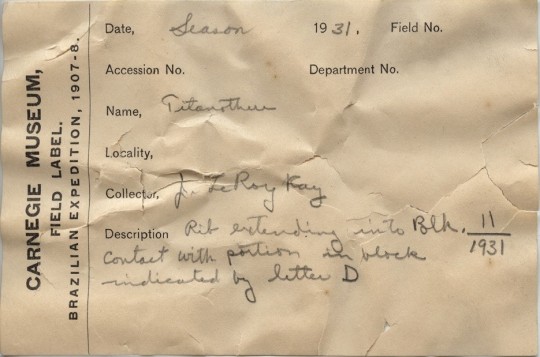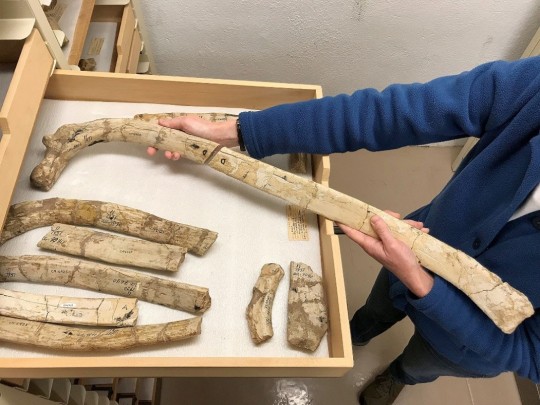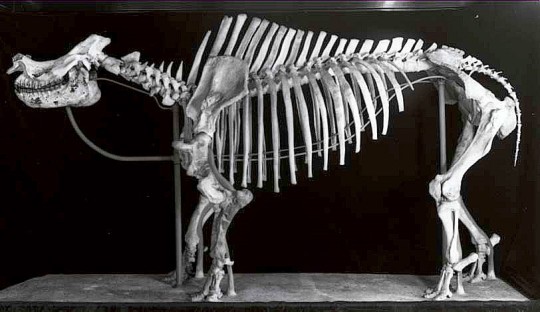By Amy Henrici
Collection Managers often solve fossil mysteries, and sometimes we have only a few clues to assist us. A recent mystery involved some rib fragments prepared by PaleoLab volunteers. Individual packages containing rib fragments found in an old cardboard box stashed in a Vertebrate Paleontology storage room proved to be perfect for PaleoLab volunteers to hone their preparation skills.
My task as Collection Manager is to catalog and integrate these ribs into the fossil mammal collection. Fortunately, most of the rib packages contained field labels, which are used to record information when the specimen is collected. My first clue came from the Description category of a field label with one of the rib packages, and it indicated that the rib connected with a block (which consists of fossil and rock). Because there are no blocks of unprepared fossil mammals in storage, I had to assume that this block had been prepared and the specimen was cataloged. The field label lacked a catalog number (Department No. on the label) and any locality information, which would normally assist in locating the rest of the specimen.

This field label must have been printed for an expedition to Brazil, and the left overs were used by all museum expeditions until they ran out.
The only clue that I had to link the rib to a cataloged specimen in the Section’s computerized database was the block number (Blk. 11/1931), which are entered in the field number category of the database. A search of the database retrieved two specimens with this field number, CM 6425 and CM 36355. Both were brontotheres, formerly known as titanotheres, which are large, extinct rhinoceros-like herbivores. I located the specimens in the collections, and both included incomplete ribs. The field label shown here mentioned that the rib made contact with a “…portion in block indicated by letter D”. Amazingly, I found the letter D written on the broken end of a rib cataloged as CM 6425, and the rib fragment associated with the field label connects to it. I was able to fit all of the rib pieces prepared in PaleoLab onto other ribs cataloged as CM 6425.


Amy Henrici is the Collection Manager for Vertebrate Paleontology at Carnegie Museum of Natural History. Museum employees are encouraged to blog about their unique experiences of working at the museum.
